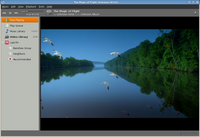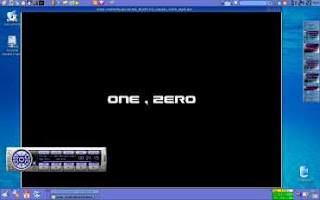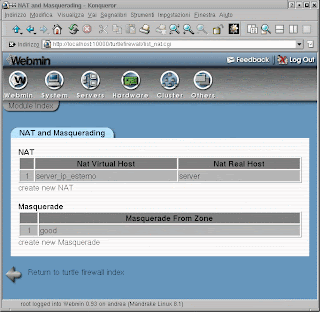 ClamAV
ClamAV
Clam AntiVirus is an anti-virus toolkit, designed especially for e-mail scanning on mail gateways.
It provides a number of utilities including a flexible and scalable multi-threaded daemon, a command line scanner and advanced tool for automatic database updates.
The core of the package is an anti-virus engine available in a form of shared library.
Features include:
* Command-line scanner
* Fast, multi-threaded daemon with support for on-access scanning
* Milter interface for sendmail
* Advanced database updater with support for scripted updates and digital signatures
* Virus scanner C library
* On-access scanning
* Virus database updated multiple times per day (see home page for total number of signatures)
* Built-in support for various archive formats.
* Built-in support for almost all mail file formats
* Built-in support for ELF executables and Portable Executable files compressed and others
* Built-in support for popular document formats including MS Office and MacOffice files, HTML, RTF and PDF
HomePage:
http://www.clamav.org/
AVG Free
AVG Free for Linux is a commercial-grade antivirus product. It can be used on a single computer and is intended for private, non-commercial use only.
AVG Free can be run entirely from the command prompt but there is also a graphical front end available. Using the command line offers some extras such as creating a report file, while updates are easy to apply and can be scheduled.
The graphical user interface is both efficient and simple, and it can be used even by inexperienced Linux system users.
Features include:
* Advanced virus detection methods (heuristic analysis, generic detection, scanning)
* Scheduled and on-demand scanning of folders, files, and common archive types
* Rapid virus database updates for the lifetime of the product
* Small update files that do not drain system resources
* Automatic update functionality
* AVG On-Demand Scanner, which allows users to perform scheduled and manual tests
* High quality manual
HomePage:
www.grisoft.com
P3Scan
P3Scan is a fully transparent proxy-server for POP3, SMTP, and limited POP3S Clients.
It can be used to provide email scanning from the internet, to any internal network and is ideal for helping to protect your "Other OS" LAN from harm, especially when used in conjunction with a firewall and other Internet Proxy servers.
It provides scanning of incoming/outgoing email messages for Viruses, Worms, Trojans, Spam, and harmful attachments. Because viewing HTML mail can enable a "Spammer" to validate an email address (via web bugs), it can also provide HTML tag stripping.
P3Scan is a derived work of POP3VScan.
Features include:
* Works with
o Kaspersky Anti-Virus for Linux (AVPD)
o Trophie Anti-Virus Daemon
o FRISK F-Prot Antivirus
o Clam AntiVirus
o F-Secure Anti-Virus
o Any other virus scanner that can output its report to the console (stdout)
HomePage:
p3scan.sourceforge.net
Avast!
Avast! Antivirus is an anti-virus program developed by ALWIL Software based in Prague.
This software is freeware for home users and non-commercial use only.
It is a multi-award winning solution to virus protection, with anti-spyware and anti-rootkit software built in for added security.
Features include:
* Antivirus kernel
o Almost 100% detection
o Reasonable memory requirements
o ICSA certified
o The following archives can be scanned: ARJ, ZIP, MIME (+ all associated formats), DBX (Outlook Express archives), RAR, TAR, GZIP, BZIP2, ZOO, ARC, LHA/LHX, TNEF (winmail.dat), CPIO, RPM, ISO, and SIS
o Supports a number of executable packers (such as PKLite, Diet, UPX, ASPack, FSG, MEW, etc./0
* Command line scanner - scan files in specified directories and both on local and remote volume
* User interface
o Intuitive Simple User Interface
o Independent on installed graphic libraries
o Testing of whole disks or just selected folders
o Defining and running of antivirus tests
o Working with the scan results
o Actions with infected files
o Storing the scan results (history)
o Virus encyclopedia
o Command-line scanner with STDIN/STDOUT mode
* Virus Chest - a chest directory where suspicious files are stored
* Automatic updates
o Non-incremental updates
o Updates can be completely automatic
o Standard updates are provided 2 times a week
* Alerts via SMTP
* Works on all modern distributions
* Shell scripts for common tasks
* Internationalization - English, Czech, Portuguese (Brazil), Bulgarian, Finnish, French
HomePage:
www.avast.com
F-Prot Antivirus
For home users using the Linux open-source operating system, company offer F-Prot Antivirus for Linux Workstations. F-PROT Antivirus for Linux Workstations utilizes the renowned F-PROT Antivirus scanning engine for primary scan but has in addition to that a system of internal heuristics devised to search for unknown viruses
F-PROT Antivirus for Linux was especially developed to effectively eradicate viruses threatening workstations running Linux. It provides full protection against macro viruses and other forms of malicious software - including Trojans.
Features include:
* Scans for over 546460 known viruses and their variants
* Ability to perform scheduled scans when used with the cron utility
* Scans hard drives, CD-ROMS, diskettes, network drives, directories and specific files
* Scans for images of boot sector viruses, macro viruses and Trojan Horses
HomePage:
http://www.f-prot.com/products/home_use/linux/
F-Secure
F-Secure Linux Security scans and removes viruses from networked or stand-alone workstations, database servers and application servers. It enables system administrators to scan files on Linux servers that handle for example web sites, ftp sites or file sharing.
The firewall component protects the computers against unauthorized connection attempts. The integrity checking feature protects critical system files against unauthorized modification attempts. F-Secure Linux Security introduces one installation package for Workstation and Server environments.
F-Secure Linux Security is centrally managed with F-Secure Policy Manager. F-Secure Policy Manager provides a tightly integrated infrastructure for defining and distributing security policies and monitoring the security of different applications from one central location.
Features include:
* Easy-to-use web-based user interface accessible also remotely
* Real-time antivirus protection
* Host firewall management
* Protects systems from rootkits
* System integrity checking and verification
* Centralized management, reporting and alerting with Policy Manager
* Automatic virus definition updates
* Risk and Spyware protection for Linux
* Interface for third party e-mail gateways
* Linux Samba file server support
* Open anti-virus scanning interface (API) for custom application integration
* Option of using Command-line only Anti-Virus Scanner
* Option to disable firewall, web user interface and real-time scanning components
HomePage:
http://www.f-secure.com/webclub/fsls.html
 Wubi is an officially supported Ubuntu installer for Windows users that can bring you to the Linux world with a single click. Wubi allows you to install and uninstall Ubuntu as any other Windows application, in a simple and safe way. Are you curious about Linux and Ubuntu? Trying them out has never been easier!
Wubi is an officially supported Ubuntu installer for Windows users that can bring you to the Linux world with a single click. Wubi allows you to install and uninstall Ubuntu as any other Windows application, in a simple and safe way. Are you curious about Linux and Ubuntu? Trying them out has never been easier!


























